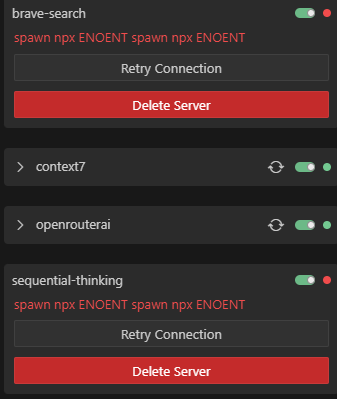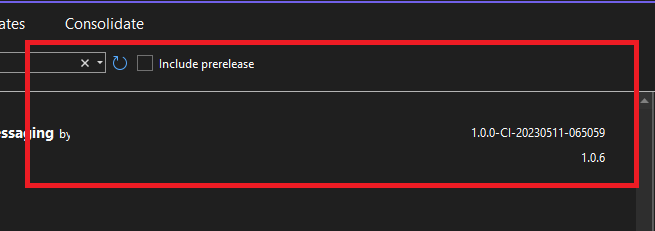Architecting Scalable OCPP Compliant EV Charging Platforms
- Understanding OCPP: A pivotal standard for interoperability in charging networks.
- Benefits: Highlights include hardware agnosticism, interoperability, and enhanced security.
- Key Components: Focuses on backend design, CSMS, and certification compliance.
- Real-World Examples: Showcases implementations by EV Connect and AMPECO.
- Future Considerations: Emphasizes upgradeability, scalability, and evolving security needs.
Table of Contents
- Understanding OCPP
- Benefits of OCPP-Based Architecture
- Key Components for Scalable Architecture
- Real-World Implementation Examples
- Future Considerations
- Summary
Understanding OCPP
The Open Charge Point Protocol (OCPP) serves as the communication backbone between EV chargers and Charging Station Management Systems (CSMS). By facilitating interoperability, OCPP allows network operators to seamlessly integrate different brands of charging stations into a unified ecosystem. As a widely embraced standard, OCPP is crucial in establishing cohesive charging networks without being constrained by vendor-specific technologies.
Currently, multiple versions of OCPP are in play:
- OCPP 1.5: The initial version that introduced basic functionalities for communication between chargers and CSMS.
- OCPP 1.6: A more robust version adding features like improved error handling and enhanced security protocols.
- OCPP 2.0.1: The latest iteration emphasizing advanced security and additional capabilities, which offers certifications for core and advanced modules through the Open Charge Alliance (OCA).
With the impending rollout of more certification modules in March 2025, OCPP compliance is set to become an industry-standard requirement that platform architects must consider when designing scalable charging solutions.
Benefits of OCPP-Based Architecture
Hardware Agnosticism
One of the standout features of OCPP is its ability to enable hardware-agnostic charging platforms. Network operators can integrate any OCPP-compliant charger, independent of the manufacturer. For instance, AMPECO’s platform claims compatibility with over 70 leading charging station manufacturers, emphasizing OCPP’s flexibility and adaptability. This characteristic allows businesses to scale their operations without being locked into a specific vendor’s ecosystem, providing freedom for future growth and innovation.
Interoperability and Future-Proofing
Adopting OCPP standards is pivotal for ensuring that charging networks remain compatible across generations of equipment. By focusing on OCPP compliance, operators mitigate the risk of fragmented systems that could render investments obsolete when technology advances. This forward-thinking approach is essential for maintaining competitive advantages in a fast-evolving marketplace.
Security Enhancements
With OCPP 2.0.1, security is elevated to new heights. The implementation of advanced security modules helps safeguard charging networks against emerging threats. For example, EV Connect’s OCPP 2.0.1 certification signifies a commitment to robust security measures, ensuring that as charging infrastructures scale, they retain their integrity and protection against potential vulnerabilities.
Key Components for Scalable Architecture
Architecting a scalable, OCPP-compliant platform necessitates careful consideration of several key components:
Backend System Design
A robust backend design is crucial for supporting multiple OCPP versions concurrently. Given that charging networks often incorporate a mix of equipment operating on different protocol versions, the architecture must be flexible and capable of handling various communication standards. For instance, AMPECO’s platform supports a triad of versions: OCPP 1.5, 1.6, and 2.0.1, demonstrating the importance of backward compatibility in charging network design.
Charging Station Management System (CSMS)
The CSMS acts as the nerve center for the entire charging network, directing communication between connected charging stations and managing their operational status. This component must be designed for horizontal scalability, enabling additional charging points to be integrated seamlessly as demand grows.
Certification Compliance
Pursuing official OCPP certification through the OCA is vital for ensuring interoperability and long-term viability. A certified platform is not only a mark of quality; it also guarantees adherence to global standards, laying the foundation for seamless integration with certified charging hardware. This compliance is fundamental for engendering trust among network operators and users alike.
Real-World Implementation Examples
EV Connect’s OCPP 2.0.1 Implementation
In March 2025, EV Connect announced its achievement of OCPP 2.0.1 certification for both Core and Advanced Security modules. This milestone illustrates their dedication to open standards and the interoperability of their solutions. By leveraging OCPP compliance, EV Connect enhances user experiences through a reliable and efficient charging ecosystem, marking a significant step toward long-term stability and adaptability in the industry.
AMPECO’s Multi-Version Support
AMPECO’s EV Charging Platform stands out as a prime example of scalable architecture capable of supporting multiple OCPP versions simultaneously. Their hardware-agnostic approach allows them to integrate diverse manufacturers through OCPP compliance, proving the viability and flexibility of their solution. Such an adaptable architecture is essential for operators seeking to broaden their network without compromising on service quality.
Future Considerations
When designing scalable OCPP-compliant platforms, architects and engineers must contemplate several key future-oriented factors:
- Future Upgradeability: Establish a framework that allows for seamless upgrades to future OCPP versions without requiring a complete overhaul.
- Backward Compatibility: Ensure that newer systems can still interact with older OCPP implementations, preserving existing investments.
- Scalability: Design systems that can efficiently handle thousands to millions of charging sessions, accommodating growth trajectories as EV adoption rises significantly.
- Evolving Security Protocols: Regularly update security measures to keep pace with emerging threats and standards in the cybersecurity landscape.
- Integration with Energy Management Systems: Explore the potential for integrating charging platforms with broader energy management infrastructures for optimized performance and resource utilization.
Summary
In conclusion, designing scalable OCPP-compliant EV charging platforms involves intricate knowledge of the OCPP standard and its implications for interoperability, security, and future-proofing. As the EV market continues its rapid expansion, architects must emphasize the importance of building robust, flexible, and certification-compliant systems that can support a diverse ecosystem of charging stations.
By leveraging OCPP standards, businesses can forge ahead in developing agile, adaptable charging infrastructures that are not only capable of handling present demands but are also well-prepared for future innovations in the electric vehicle landscape.
If you’d like to discuss innovative approaches to OCPP compliance or explore architectural strategies for your next project, connect with me on LinkedIn, or check out my GitHub for implementation examples!
FAQs
- What is OCPP?
- Why is security important in OCPP?
- How does hardware agnosticism benefit operators?
- What are the key features of OCPP 2.0.1?
What is OCPP?
OCPP stands for Open Charge Point Protocol, which is a communication standard that allows for interoperability between electric vehicle chargers and management systems.
Why is security important in OCPP?
Security in OCPP is vital to protect charging networks from cyber threats and to ensure the integrity and reliability of EV charging systems.
How does hardware agnosticism benefit operators?
Hardware agnosticism allows operators to choose among various OCPP-compliant chargers without being locked into a specific manufacturer, enhancing efficiency and scalability.
What are the key features of OCPP 2.0.1?
Key features of OCPP 2.0.1 include enhanced security protocols, better error handling, and the ability to support a broader range of functionalities for charging stations.



